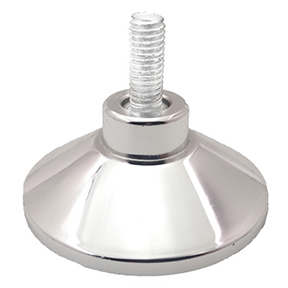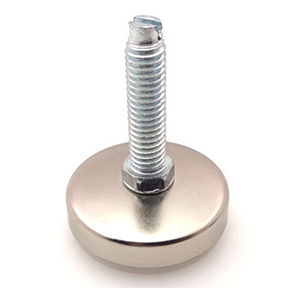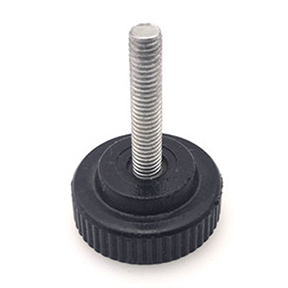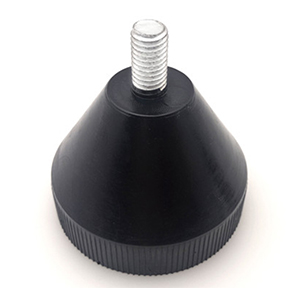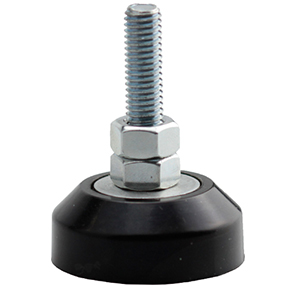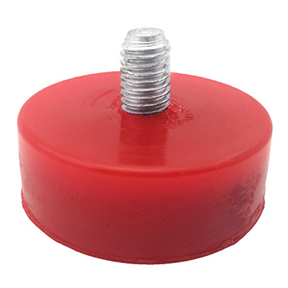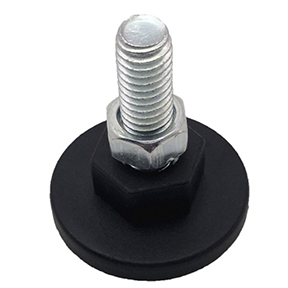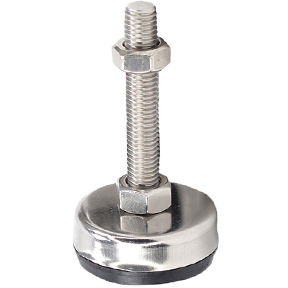Evolution steering wheel appearance
2013-07-19 15:34:47
ZHANG Shuang Shuang Zhang
Zhao Xinjun ZHAO Xinjun
Northeastern University School of Mechanical Engineering and Automation
Abstract: The car's steering wheel is one of the most important parts car, this article is committed to read the pages of history, explore the evolutionary history of the steering wheel appearance from multiple perspective appearance of external factors on the impact of the steering wheel; summarize the evolution of the steering wheel process in a variety of typical appearance, as well as color, material, size and functional changes; Finally, the future development trend of the steering wheel appearance. Keywords: central steering handle appearance centralized control cars from the late nineteenth century inception, has gone through ups and downs over 100 years. So, 100 years of history in this process, an important part of the steering wheel as the car's appearance is how it evolved?
I. prototype vehicle steering apparatus
In human history, the first vehicles are rickshaws and animal-drawn vehicles [1], they are relying on external forces rather than the institutions to achieve the vehicle's steering, the vehicle itself is not steering; later made of wood with a hard push unicycles [ 2] (Figure 1), is connected by two hand push forward the frame handlebar, handlebar shape only two made of wood, steering still need to rely on manpower to achieve; seventeenth century appear bike [2 (] Fig. 2) handlebar shape uppercase letters T-type, turn the front wheels lift off when changing direction. This handlebar is easy to grasp the hand, to master the balance, and did not turn to the role of human remains turned momentum.
Produced in 1885, one of the world's first motorcycle [2] (Figure 3), and its handlebar and fork structure through linkage driven vehicle steering. Handlebar shape is T-type structure, both ends of the handlebar put a plastic cover, making it more convenient grip, increasing the friction; handlebar texture of the material is solid metal materials; handlebar vertical The link also with beautiful curvature.
Two. Automobile steering device early birth
Just born in the era of car, the car's steering system is similar to the ship's rudder control devices to complete, and it is designed to handle two-wheelers in addition to the earlier reference, also draws on the ship's rudder. Single handle steering lever is an early automobile steering device one. Karl Benz in 1886 invented the world's first a three combustion engine vehicle [3 (] Figure 4), which means the front wheels like a bicycle wheel, which is a rack and pinion steering mechanism, which is the modern car steering originator [1]. Direction of travel by car is a single handle to lever mounted on the vertical pole end a joystick, the driver is a single hand holding the handle by rotating the control steering (Figure 5). The shape of the handle from the ship's rudder.
Dual steering lever handle cross another early automobile steering device. Daimler, who in 1886 invented the world's first a four gasoline engine vehicles [3] (Figure 6), which is a cross shape of the handle (Figure 7), with the ship's rudder (Figure 8) is more similar to the , by the hands holding two handles rotate back and forth manipulation.
Three hundred of the steering wheel appearance .1890-1990 evolution
The birth of a circular steering wheel, from the pre-1891 car engine. Cars, because the front weight gain, rudder in the form of car will handle severe vibration transmission to the driver, increasing their fatigue. So the introduction of the gear system that allows flexible operation, vibration isolation, so the handle lever is eliminated, a new steering wheel design round came into being, "steering wheel" also from its name. Meanwhile, the steering wheel with the steering shaft is moved from the neutral position to the sides. Early changes in vertical mounting lever and steering wheel to the steering column tilt-type installation. Into the twentieth century, the basic shape of the car steering wheel steering wheel shape is circular. Initially there is the four auxiliary steering wheel, within the disc supporting the four pieces to form a stable secondary structure, this four auxiliary cross a cross line with the symmetrical structure of aesthetic rules; outer edge of the disc in the cross, in addition to the mechanical structure very strong, and also reflects the balanced visual experience. Circular disc is rotated relative to the handle in a more flexible and comfortable. Figure 9 is a Ford Model T in the early 1900s of a.
Since the Mercedes - Benz car company since its establishment, has emerged more features four auxiliary bicyclic steering wheel shape. Within four wheel spokes macrocyclic install a small ring, so that the model size is also larger and larger cylindrical disc wheel structure is more stable. The center of the steering wheel in the materials and colors made a split, and the car logo design to it. In the hand of the large disc inside, made a deal with undulating to conform to the shape of fingers, hands and increases the friction disc, the operation more convenient. Figure 10 is a 1930 Mercedes - Benz 770K SPORT SEDAN bicyclic steering wheel shape [3].
Following the four auxiliary steering wheel after the emergence of new styling is Sansuke steering wheel styling. Because the dashboard with steering wheel shift from a neutral position to a position corresponding to the driver can see more clearly the parameters on the dashboard, the steering wheel is removed the original four spokes one upper plate leaving enough space for driving Members from easily observe the dashboard. Similarly Sansuke structure is relatively stable, from an aesthetic point of view, three auxiliary strip into three sectors of the disk, this division is simple and generous. Figure 11 is a 1958 Subaru Fuji Heavy Industries 360 steering wheel [5]. It is a cross section of the outer disk radius is small, a bit thin, which is obviously not ergonomic; spokes are too small, the structure is not strong enough. With the development of automotive technology, it has been improved Sansuke steering wheel, disc and spokes oversize in Figure 12 for the 1972 second-generation Toyota Mark 2 steering wheel [6].
Two auxiliary steering wheel shape, is a four-wheel styling aids and Sansuke extension in the eighties on the car are more common. Two spokes supporting discs, which requires that it must be structurally stable, so two spokes and center part are generally more heavy, occupy disk larger area, such as a ladder structure, as shown in Section 13 and 14 respectively for Toyota four and fifth generation Mark 2 steering wheel [6].
Steering wheel sizes from birth to the development process, is also changing. Cross-sectional thickness of the disc has not been seriously considered in the early and design, some discs it is too thin, hand grip is comfortable enough; later introduction of ergonomics, disc-sectional dimension moderate change, and also made waves processing, in accordance with the form of hand grip. In addition, the eighties, there was a head airbags protect the driver, to be installed in the center of the steering wheel. So, it is necessary to expand the center of the steering wheel size, with sufficient space to balloon.
Early steering wheel colors, mainly brown series such as brown-red, brown and beige, white, black, and metallic silver revealed after polishing, and sometimes also used bright colors as the color. Color science can learn from, brown with mental resistance characteristics, give the driver mentally stable mood, brain fatigue resistance, improve concentration ability and sensing capabilities role. For the whole appearance of the car, a neutral brown color characteristics make it available for a variety of automotive exterior and interior colors. To the 1980s, designers try to change the color of car interiors, more people-oriented, consider occupant psychological feelings, using some warm series, such as red, pink and so on, so that people feel ride warm and comfortable, the steering wheel and interior color natural color matched design. In addition, the steering wheel should avoid using a large area of color stimuli allows the driver to produce visual fatigue and affect driving.
Four years after .1990 rapid changes of modern steering wheel
After the 1990s, under the influence of high-tech, automotive industry will be a number of high science and technology widely used therein. Car steering wheel through a century the evolution of development become more familiar shape.
Sansuke and four auxiliary wheel is the most common structures, two relatively small secondary structure of the steering wheel. Sansuke interior styling is characterized by a triangular plate basic skeleton structure, some angular triangle star, some prominent central circular belt three shorter spokes, in Figure 15 the steering wheel of the BMW 5-Series 530Li [7]; four auxiliary steering wheel shape is like a stretched stubby limbs, stomach hypertrophy villain, just like the villain's eyes round instruments replaced the villain's head, shown in Figure 16 Chevrolet "Aveo" steering wheel [8]. Two auxiliary styling is characterized by two spokes are basically located in the middle of the horizontal position of the disc slightly downwards, the disk is divided into two parts. Two spokes are generally wider, if the function keys, will be arranged in the wide spokes, Figure 17 is a MINI ParkLane4 steering wheel [7].
Avant-garde car steering wheel steering wheel while retaining the basic functions of the premise, a breakthrough innovation in appearance, shape, no longer confined to the traditional round, appeared square, Mercedes-Benz concept car shown in Figure 18 [9] and 19 large Send D-BONE. concept car [8], sector, Fuji Heavy Industries in Figure 20 concept car steering wheel [8], the lower part of the cutting circle shape, shown in Figure 21 LE MANS Audi steering wheel [8]. Designers also draw the shape of the aircraft joystick Figure 22 is a Boeing 737 cockpit lever [9], which is U-shaped bar, control is x, y, z three directions steering system, Figures 18 and 19 The square on the U-shaped bar with the aircraft, except that the upper portion of the U-shaped seal, his hands holding the left and right sides, so that rotation of the steering wheel so frequent operation more flexible. Steering wheel spokes also appeared in the structure of the central fixed centralized control style new style steering wheel. Figure 23 is a Dongfeng Citroen - Triumph of the steering wheel [7], this steering wheel and the general difference is that the middle part of the overall fixed on the steering platform, integrating a variety of function keys airbags and parts and steering wheel spokes are separated, when hit the steering wheel when the steering wheel with spokes only the following rotation, the middle part is fixed, so that the driver on the middle part of each function key operation more convenient should hand. This design is mainly for ergonomics, improved ease of handling and driving safety.
Functionally, the original steering wheel with steering function only, then the speaker is placed on the steering wheel. Development to the present day, the steering wheel features tend to diversify. Reach of the thumb in the general location of the steering wheel adds some additional function keys, multifunction steering wheel, the driver is not required to have the advantage of much action, you can easily control the car a lot of functions. Such as Mercedes-Benz C, E class car steering wheel [7 (] Figure 24). Various function keys additions, making the steering wheel produced a certain shape changes. Function keys shape, size, color, font, design and placement, gave the steering wheel design adds new content.
Modern car steering wheel in color, is no longer confined to the past several colors. In general, automotive interior and exterior colors to match a certain relationship; steering wheel and interior color colors are echoed. Steering wheel color selection also directly affect the driver's physiological and psychological feelings, which involves the entire vehicle personnel security issues. The 1990s ordinary steering wheel generally gray, black and silver white, gray and black as sedate driver features can bring calm psychological feelings, not easy to produce fatigue, and gray and black are popular colors, engaging and will not become obsolete. Silver is mainly used for the steering wheel with color, from the decorative effect, so that the steering wheel does not become rigid monotonous. However, in today ahead of the new car, the colors were bold applications, such as pure white, bright yellow, orange, red, elegant light blue, brown, and so tranquil.
The outer surface of the steering wheel material is directly related to the appearance of the steering wheel texture, color and texture of the driver, and also to the psychological impact. Materials to bring new innovations to give the steering wheel changes, the early material only metal and plastic steering wheel, steering wheel adds a modern leather, leather, wood, synthetic materials than the original range of.
V. Future Prospects
Mercedes-Benz F200 cars without steering control system [10 (] Figure 25 and 26), the driver control the car using the side of the shift lever all the movements, the steering when the driver will move the shift lever to the left or right; brake and acceleration when pulling the lever backwards or forwards; in this car, there is no common control device or connect components, such as the steering wheel, steering column and pedals, the driver all the instructions by electronic transmission.
Mercedes-Benz concept car although there is no steering wheel, shift lever, but it is actually replaced the original steering wheel disc-shaped styling, with a new control method to achieve the same steering function, the application of the new control system. This is likely to be the future of the steering wheel a trend. Direction "dish" No, but does not change the basic functions of steering, the primary objective of safety will not change, human - machine - environment relationship-oriented ergonomics more perfect application of the concept does not change; new forms will be generated along with the emergence of new technologies, will be with the new demands arising from the human, the new steering comes naturally evolve with its styling.
The distant future is unpredictable, we can only grasp the steering wheel styling historical evolution, in order to make it to the current steering wheel design to provide accurate guidance and reference, and grasp the development trend of the future steering, Furthermore diverter design for future laid a good foundation
Previous:Auto Body Repair Tool Design and Application Next:On the motorcycle handle with PVC pellets production technology
Related News
- Fracture repair knowledge ruled handwheel handle
- Troubleshooting ruled bakelite hand wheel and troubleshooting
- Ruled handwheel is a natural bakelite handwheel
- Bakelite valve installation, operation and maintenance
- New pressure-filled rubber mold bakelite handle
- Large hydro elastic metal plastic Thrust Bearing Technology
- Our robot industry development trends
- CNC machine tools towline Forecast
- Rotating the handle needle valve
- Rotation of the handle shut-off valve


